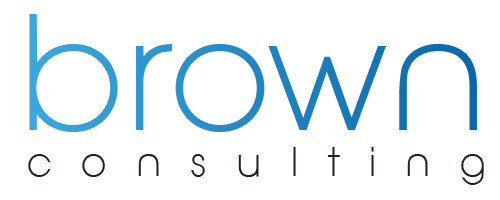Brown Consulting Featured in Databox Article: 18 Common Lead Generation Mistakes Facebook Advertisers Make
Marketing expert Jenn Brown, our Founder, was featured in an article on Facebook marketing tactics! Facebook is a powerful marketing tool, but there are pitfalls for the inexperienced business owner. Brown Consulting can circumvent those mistakes and make advertising a breeze. Struggling with your marketing? Feeling a slump in your revenue? Contact us to learn how we can help!
18 Common Lead Generation Mistakes Facebook Advertisers Make
Navigating the murky waters of Facebook marketing is no child’s play. Brands and marketers new to it make mistakes that cost them a lot of time and money.
So, we asked 31 marketing professionals what they think are the biggest lead generation mistakes Facebook marketers make, and here’s what they said.
1. Not optimizing visuals for mobile.
98% of active Facebook user accounts worldwide accessed Facebook via mobile devices. And Facebook estimated that 75% of total mobile data traffic by this year would be from mobile. If you’re not optimizing your content for mobile, you’re missing out on a huge chunk of audience.
“I see many brands on Facebook not optimizing their cover photo area for tablets and mobile devices.” Says Tiffany Lewis of More Meaningful Marketing.
“It’s a big miss because the outer edges of the art and information get cut off or become disproportionately sized. Leaving 90 pixels of space on the right and left side of the cover photo will allow it to scale appropriately without being cut off. I would advise checking mobile before settling on your cover photo since so many people are browsing from these devices.”
2. Posting salesy organic content
Paid advertisement and organic content – both are equally important while marketing on Facebook.
“Being salesy and posting advertisements organically is the biggest mistake a brand can make on Facebook, and yet many of them do. Ostensibly, your followers are already aware of your brand, and posting ads to your feed will mainly serve to annoy them. Ads should be placed and targeted through Facebook Ads Manager. Organic content should be about what your followers want to see, not just what you want them to see.” Explains Beth Cooper of KNB Communications.
Clarify Capital’s Kimberly Smith also believes it’s a big mistake to focus too much on sales. “Brands who hyper-focus on sales without implementing a strong content marketing strategy are missing the mark. Facebook users don’t like ads. They’re also quick to interpret any overt selling as spammy. While Facebook ads are an important part of every marketing strategy, brands need to focus on creating content that provides value, too. The majority of posts should provide free value to users; brands need to be consistently publishing content that’s engaging and shareable.” Shares Smith.
Carma Levene of Carma The Social Chameleon says, “One of the biggest mistakes I see brands make over and over on Facebook is not understanding the nuance between organic and paid activity.
Organic Facebook publishing is best used to build community, seek feedback, answer questions (either addressing objections to the sale, performing customer service), creating awareness, and expressing the brand ethos or value proposition.
Separating your sales objectives from your organic Facebook strategy and moving into the realm of paid Facebook Ads will better allow you to segment messaging to more specifically address the stage of awareness or position in the sales journey they are at.
Resulting in your organic community not being pressured to buy something they’re not ready to buy yet, and simply being a space for them to collect more information about your products and your brand itself.”
Jonathan Aufray of Growth Hackers Management agrees and sees many brands and marketers on Facebook that keep running discounts, sales, offers, holiday specials, and more.
Big mistake.
“You don’t want to be too salesy. You also want to educate your audience about your brand and your product. You want to share interesting, insightful content with them, and once they’ve engaged a few times with your content, then that’s ok to try to sell them something. By nurturing your community with quality content and creating sales posts only from time to time and not all the time, you will actually increase your sales while building a more loyal community.” Explains Aufray.
3. Not using viral content
Ever used memes, GIFs, funny viral-worthy posts on Facebook to engage with your audience? No? You’re missing out big time.
As Austin Iuliano says, “One big mistake that many companies make on Facebook is not using viral-worthy content to build community. Meme’s and other silly content allow your community to be built on collective values and grow your page.”
4. Advertising to cold audience
“Many brands directly advertise products to cold audiences on FB and complain that the cost of acquisition is too high.” Shares Sid Bharath of Broca. “You may make a few sales, but of course, most of the audience doesn’t recognize the brand, and so they won’t convert.
The solution is a 3-step ad sequence. Start with some interesting content to the cold audience to warm them up. Then target the warm audience with your product, and perhaps a limited time offer. Finally, retargeting visitors and cart abandonment to close the sale.”
Darren Litt of Marketerhire agrees and adds, “Some brands don’t have enough margin to advertise on Facebook. So before you spend money on ads, make sure your business metrics support paid ads.”
Editor’s Note: The Audience Building & Brand Awareness databoard shows you the KPI’s needed to accurately understand the cost of a website click campaign. Use it to make sure money spent is turning into money earned through your FB Ad campaigns.
5. Ignoring comments
Atta Ur Rehman of Physicians Thrive believes pages on Facebook that ignore the comments, posts, and other related interactions struggle to get famous, compared to the pages that actively engage in the comment section.
“Facebook fans are real people, and when they interact with your page by liking or commenting within a thread on your Facebook page, they want to ensure that you are listening. And if they don’t hear from you in a while, they lose interest and stop interacting.
Therefore, brands need to participate and reply to posts and comments from fans, leave a like, and appreciate their efforts and insightful suggestions (if they leave any). Brands should adopt a positive attitude and appoint a team that is actively engaging with social media fans because notification from the brand page can attract a lost customer back to the page.” Explains Rehman.
6. Failing to create a social media marketing strategy
One of the biggest mistakes one can make on Facebook is to proceed without having a clear social media marketing strategy in place.
Nikola Roza shares, “The big mistake most brands make is that they have a Facebook presence because that’s what they’re supposed to do. And they don’t have a clear vision and goal(s) in mind.
If you do something because you feel you have to and that you’re missing out if you don’t- you play to lose as you’re competing against people who know exactly why they’re on Facebook and who follow laid out plans and chase measurable goals.
You can’t compete with them by taking random action, and that’s why it pays to first spend as much time as needed to determine if your brand should even be on Facebook or not. And if the answer is ‘yes,’ then figure out how to approach it and how to grow that marketing channel effectively.”
7. Not leveraging Facebook for social commerce
“One of the biggest pitfalls we see with companies with a Facebook presence is not understanding or learning how to leverage the platform for social commerce.” Explains George Hadary of Astteria Diamonds UK.
“Social commerce refers to the delivery of typical e-commerce activities via social media platforms. It can not only help B2C models get exposure to new markets, but it can help the business itself learn more about their customers.
On Facebook, users can easily share commercial information within their social networks by ‘liking’ or ‘sharing’ products and purchases. This is useful as, unlike traditional eCommerce reviews, this is within a group that knows, engages with, and most importantly, trusts each other.
This is one of the premium benefits of social commerce: taking advantage of existing social network relationships to gain commercial benefits. The results? You might see increased transactions (whether they share commercial information or actual sales) or even higher customer loyalty. Social commerce can ensure better rankings, engagement, and customer loyalty.”
8. Not boosting your page from the start
Every platform has a set of basic do’s and don’ts that all business owners and marketers need to follow from the start. One of the do’s of Facebook marketing that brands and marketers should employ right away is boosting your page for higher visibility.
Chuks Chukwuemeka of DepreneurDigest believes that this can cause the biggest damage to Facebook marketers and brands trying to increase their visibility on Facebook.
“The competition is high, and any brand whose Facebook business page isn’t seen by the majority of its target audience isn’t ready for Facebook marketing. To fix this, brands should set up their Facebook business pages properly. Choose the right category, use a suitable profile, and cover photos that represent their brands.” Explains Chukwuemeka.
9. Using low-quality images
Did you know Images account for 75-90% of Facebook advertising performance?
Social media platforms are all about visuals – the better your visuals, the better your marketing will be. And Bernadett Dioszegi of Bannersnack agrees.
“When it comes to Facebook marketing, one of the biggest mistakes is neglecting the power of images. Many brands are using low-quality images, or they simply choose stock photos that don’t align with the message of the post.
The best you can do is to upload simple images that support the main point of your copy and landing page. You can also try the carousel format to increase the chances your post is getting noticed.
Use high-quality images with a strong visual focus. Relevant images that support the main point of your ads tend to perform better. Besides this, it’s essential to use the right image size for the right placement:
1,080 x 1,080px: Facebook Feed, Facebook Search Results
1,200 x 1,200px : Facebook Right Column, Facebook Instant Articles, Facebook Marketplace
1,200 x 628px: Sponsored Message
1,080 x 1,920px: Facebook Stories.” Shares Dioszegi.
10. Creating content that doesn’t work on social media
Andrew Ruditser of Maxburst believes one big marketing mistake brands make on Facebook is not using the right content on their posts to make them engaging. “Users nowadays have a short attention span and are looking for information that they can quickly find.
Therefore, the design of short content, big headers (that highlight the main thing, so it’s easy to locate), and many visuals will allow users to engage much more quickly and easily as opposed to long content forms, which display too much unnecessary information and turn a user off.
The use of these types of visuals (including images, videos, gifs, memes, etc.) throughout your posts will keep users interested and wanting to learn more, resulting in higher engagement and increase in shares.” Explains Ruditser.
Trenton Erker of Clarity Online SEO is of the same mind and shares, “The biggest mistake I see brands make on Facebook is sharing only pictures of their service or product. Estheticians and hair stylists are probably the biggest perpetrators of this. They don’t get personal; they don’t show themselves or their clients happy, just pictures of lashes, permanent eyebrows, and haircuts.”
Dr. Juan Izquierdo agrees and adds, “When brands post content that their audience doesn’t care about. Brands should focus on posting information that solves an actual problem or enhances the life of the brand audience.”
And what’s the best way to do that?
William Schumacher at Uprising Food explains, “For example, say you set up a website and begin sharing content about your brand or products. The problem with this is that users on Facebook are not interested in those goods and services, but they are interested in the activities related to such products or services.
For example, people who like to cook want to talk about how to create wonderful dishes in various ways. Having a page that focuses on making tasty dishes and selling your goods in a way that is useful to your customers would generate more sales and customer engagement for your brand.”
11. Inconsistency
“When it’s all said and done, a lot of brands suffer on Facebook as a result of inconsistent behaviors. Simply put? Building a brand on social media begins with a plan — not on a whim.” Shares Vickie Pierre of Insurantly.com.
Pierre adds, “It’s not enough to post occasionally or when you feel like it. Irregular posts won’t get you noticed by Facebook’s algorithms, and they surely won’t get you noticed by the followers you want to attract.
Bottom line? You have to learn to post regularly – at least once daily – with quality posts. Use a scheduling tool, like the free one tied to Facebook Business, or seek a paid service like Hootsuite to ensure you’re putting out content at optimal times. Make sure you review your analytics regularly to see where you can make adjustments. And most importantly, post with intention! Find strong images, create short videos, or look for bold statements that really reflect your brand and your voice. As you continue to post with intention, it won’t be long before you begin to build important connections with your target audience.”
Randy VanderVaate of Funeral Funds believes that just like inconsistency is a big mistake, posting too often can be one too. “One big marketing mistake I see many brands are making on Facebook is posting more than two times a day, just for the sake of posting. A brand should not be flooding the viewers’ timeline with its brand posts. Brands should ideally be posting one post a day and supplementing targeted ads directed at your ideal clients. Flooding your viewer’s timelines with blog posts can have a negative impact instead of a positive one.” Shares VanderVaate.
12. Doing the bare minimum
Businesses need to strike the right balance between not posting at all and posting too often. Not doing enough on Facebook can also put your audience off.
Al McMordie of Big Al’s Sports Picks sees brands doing just the bare minimum on Facebook, which can be a big mistake.
“Many companies seem only to be using Facebook for quick company updates, such as new products or services. In other words, they are doing the very least they can to maintain a presence. However, these companies are missing out on opportunities to build brand awareness and make connections. So, regularly add your blog posts, and ask pointed questions to instigate a conversation. Getting to know your consumer base can be a game-changer!” Explains McMordie.
13. Using paid advertising wrong
John Barnes of Lamps Plus shares, “I think it’s a mistake not to invest a few marketing dollars into a Facebook advertising campaign for a well-performing post. However, some companies try to boost posts that are not performing well so that they get more engagement. Yet, an over-performing post is already being shared, liked, and commented upon, so you want to keep building that momentum by boosting THAT post.”
Robert Applebaum of Applebaum Beverly Hills recommends brands and marketers to use ads to tell a story that audiences will connect to be effective with Facebook. “It’s necessary to make this connection with your audience to generate leads that convert. Consider developing ads that build trust and confidence in your brand by sharing success stories, rewards, testimonials, company acknowledgments, etc. You can also expand your Facebook posts to maximize visibility, and this can help strengthen engagement with your audience.” Explains Applebaum.
Bryan Ng of Bryan Digital agrees with the two and adds, “If they are running Facebook Ads, then the audiences are not targeted correctly. Correct it by refining your audiences again, interest, behavioral, custom audiences, and lookalike audiences.
Typically, lookalike audiences based on website visitors will drive more CTR traffic, thus driving conversion. If the business is running e-commerce, can try lookalike audiences based on the customer list. This, Facebook will find your customers lookalike. It is all about A/B testing for which ad set and ad works or doesn’t work.”
Editor’s note: You can’t use paid advertising the right way without tracking your efforts. Use this Facebook Ads & Google Ads Paid Marketing Overview Dashboard Template to monitor the performance and ROI of all of your paid campaigns in one place.
14. Not using localization tools
“Many brands often communicate in 2 or more languages in one post when they can use the localization option on Facebook.” Explains Natalia Kamecka of Applover. “This mistake is common for small businesses that operate in several markets but still are too small for Facebook global pages.
Using the localization tool is easy – you can just restrict your post to a preferred location or write the same post in different languages which appear as one post for everyone.”
15. Inauthentic marketing
Jennifer Brown of Brown Consulting shares, “The biggest mistake I see brands making on Facebook is inauthentic marketing. Businesses are so focused on selling a product or service that they forget the human aspect, and of all the social media platforms, Facebook is focused on human connection. Consumers have a good BS radar, better than you think.”
“In my opinion, the biggest mistake brands make on social networks is being too focused on selling their product instead of growing their community.” Opines Edward Solicito of ToTheTop.
“Social networks are all about a conversation between like-minded people who share the same passions, lifestyles, and ideas. However, a vast majority of brands fail to use this potential and oversell their products or service. The truth is, you don’t have to use an “in your face” approach to get noticed but provide genuine content that will attract people and share a good word about the brand. An excellent example of this practice is, for instance, Wendy’s on Twitter, known for their witty comments.
Brands should consider their target audience and move from the network if their product is focused on Millennials and Generation Z. However, if their target audience includes Boomers who’re active on Facebook, it’s a good platform to be on.” Adds Solicito.
Nicole Fortunaso of CRTL+ALT Marketing agrees and says, “The biggest mistake I find with brands on Facebook is that they are not storytelling. They lack putting emotion into the brand (appropriate word choice, content, hashtags, and imagery are missing); this then translates into a lack of engagement from their audience, and then the business’s page and their posts ends up being a hard sell of ‘buy now’.”
16. Breaking the 80/20 rule
Instead of making it all about you on Facebook, make it mostly about your audience. Upload content that they like to see, that benefits them, instead of going on and on about your business and its features.
Brittney Bogues of Bogues Consulting Group says the biggest mistake she sees brands making on Facebook is breaking the 80/20 rule. “When it comes to Facebook, most connections are personal, so networking marketing is king but takes some finesse since you have to make it a two-way conversation. Most brands talk at their clients on Facebook instead of engaging in two way communication.”
17. Spending most marketing dollars on influencer marketing
For Jonathan Bass of Whom Home, the biggest marketing mistake he sees brands making on Facebook is spending most of their budgets on influencer marketing. “The biggest tip I can offer is to choose digital marketing methods that have a clear ROI rather than investing in strategies like influencer marketing that might be favorable in the long term building of your brand but don’t have a clear initial return.
All business owners need to be more conscious of their spending right now, and typically marketing budgets are the first to be revised. At Whom Home, I have shifted most of the marketing budget offline and have redistributed the funds towards more traditional marketing, such as direct mail and ads on cable TV. Facebook is mainly a pay-to-play platform, which is great for brands that have the budgets to play but for smaller businesses, it is not smart to be spending most of their time on Facebook.” Explains Bass.
18. Marketing to the wrong audience
Lewie Mortier of Mitrade believes that not understanding your Facebook target audience is the biggest mistake you can make on this social platform.
“Most companies end marketing to the wrong crowd and leave a handful of clients out of the picture. What brands should do before creating an ad to sponsor their brand is to understand who their ideal target audience is and how they would turn them into clients. Remember, any business needs clients to run successfully. By having a proper marketing strategy, you can get clients with Facebook as it is still a powerful marketing tool in the long run.” Explains Mortier.
Wrapping up
So if you still haven’t started using Facebook for generating leads, now’s the time to jump into it. Experiment with paid ads and unpaid posts both and see what works best for you and your audience.





